SVT-40
The SVT-40 (Samozaryadnaya Vintovka Tokareva, Obrazets 1940 goda, "Tokarev self-loading rifle, model of 1940", Russian: Самозарядная винтовка Токарева, образец 1940 года, often nicknamed "Sveta") is a Soviet semi-automatic battle rifle. The SVT-40 saw widespread service during and after World War II. It was intended to be the Soviet Red Army's new service rifle, but its production was disrupted by the German invasion in 1941, resulting in a change back to the Mosin–Nagant rifle for the duration of World War II. After the war, the Soviet Union adopted new rifles, such as the SKS and the AK-47.
| SVT-40 | |
|---|---|
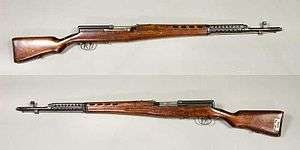 SVT-40 without magazine from the collections of Armémuseum, Stockholm, Sweden | |
| Type | Battle rifle |
| Place of origin | Soviet Union |
| Service history | |
| In service | 1940–present |
| Used by | See Users |
| Wars | |
| Production history | |
| Designer | Fedor Tokarev |
| Designed | 1938 (updated 1940)[1] |
| No. built | 1,600,000[2][3] |
| Variants | SVT-38, SVT-40 |
| Specifications | |
| Mass | 3.85 kilograms (8.5 lb) unloaded[1] |
| Length | 1,226 millimetres (48.3 in)[1] |
| Barrel length | 625 millimetres (24.6 in)[1] |
| Cartridge | 7.62×54mmR[1] |
| Caliber | 7.62 mm |
| Action | Gas-operated short-stroke piston, tilting bolt[1] |
| Muzzle velocity | 830–840 m/s (2,720–2,760 ft/s)[4] (light bullet arr. 1908) |
| Effective firing range | 500 metres (550 yd), 1,000 metres (1,100 yd)+ (with scope) |
| Feed system | 10-round detachable box magazine[1] |
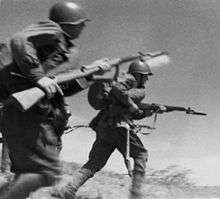
SVT-38
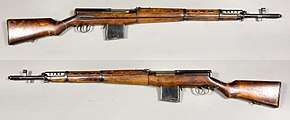
Fedor Tokarev created the basic design for the SVT rifle in the early 1930s. Tokarev gave up his previous experiments with recoil-operated self-loading rifles and pursued a gas-operating mechanism instead. Soviet leader Joseph Stalin had a great interest in semi-automatic infantry rifles, and the army held trials of automatic rifle designs in 1935. The winning rifle was designed by Sergei Gavrilovich Simonov, and was accepted into service the next year as the AVS-36. However, problems with the AVS quickly became apparent, and both Tokarev and Simonov submitted improved designs to further trials. This time, Tokarev's rifle was accepted for production, under the designation SVT-38 with hopes that it would become the new standard issue rifle of the Red Army. Ambitious production plans anticipated two million rifles per year by 1942. Production began at Tula Arsenal in July 1939 (production at Izhmash began in late 1939).[5]
The SVT-38 is a gas-operated rifle with a short-stroke, spring-loaded piston above the barrel and a tilting bolt.[1] This configuration gained wider acceptance later. There is some dispute about who exactly first developed this operating principle, as the SVT's mechanism (as implemented in 1935 competition prototype) closely resembles Dieudonné Saive's design of 1937; Saive eventually designed both the FN-49 and FN FAL, which use similar operating principles.
Soviet small arms were usually of simple and robust construction, designed for use by poorly educated and sometimes poorly equipped soldiers. The SVT-38, in contrast, had been designed with weight-saving in mind, including its wood stock, receiver, and action. It was a gas-operated action with a gas-cylinder cup that was not readily accessible. It was complex by Soviet standards, and was not suited to handle corrosively-primed ammunition without frequent cleaning.[1]
The SVT-38 was equipped with a bayonet and a 10-round detachable magazine. The receiver was open-top, which enabled reloading of the magazine using five-round Mosin–Nagant stripper clips. Fairly advanced features for the time were the adjustable gas system, muzzle brake, and telescopic sight rails milled into the receiver. The sniper variant had an additional locking notch for a see-through scope mount and was equipped with a 3.5× PU telescopic sight. This instrument was slightly shorter than the otherwise-similar PU scope used on the Mosin–Nagant M1891/30 sniper rifle.
SVT-40 and its derivatives
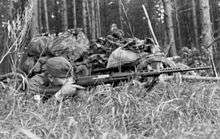
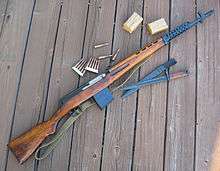
The SVT-38 saw its combat debut in the 1939–1940 Winter War with Finland. The initial reaction of the troops to this new rifle was negative. Among the criticisms were the rifle being too long and cumbersome, difficult to maintain and the magazine tending to fall out. Production of the SVT-38 was terminated in April 1940 after some 150,000 examples had been manufactured. An improved design, the SVT-40, entered production. It was a more refined, lighter design incorporating a modified, folding, magazine release. The hand guard was now of one-piece construction and the cleaning rod was housed under the barrel. Other changes were made to simplify manufacturing. Production of the improved version began in July 1940 at Tula and later at factories in Izhevsk and Podolsk. Production of the Mosin–Nagant M1891/30 bolt-action rifle continued and it remained the standard-issue rifle to Red Army troops, with the SVT-40 more often issued to non-commissioned officers and elite units like the naval infantry. Since these factories already had experience manufacturing the SVT-38, output increased quickly and an estimated 70,000 SVT-40s were produced in 1940.
By the time of Operation Barbarossa, the German invasion of the USSR in June 1941, the SVT-40 was already in widespread use by the Red Army. In a Soviet infantry division's table of organization and equipment, one-third of rifles were supposed to be SVTs, though in practice they seldom achieved this ratio. The first months of the war were disastrous for the Soviet Union; they lost hundreds of thousands of SVT-40s. To make up for this, production of the Mosin–Nagant rifles was reintroduced. In contrast, the SVT was more difficult to manufacture, and troops with only rudimentary training had difficulty maintaining it. Submachine guns like the PPSh-41 had proven their value as simple, cheap and effective weapons to supplement infantry firepower. This led to a gradual decline in SVT production. In 1941, over one million SVTs were produced but in 1942 Ishevsk arsenal was ordered to cease SVT production and switch back to the Mosin–Nagant 91/30. Only 264,000 SVTs were manufactured in 1942 and production continued to diminish until the order to cease production was finally given in January 1945. Total production of the SVT-38/40 was around 1,600,000 rifles, of which 51,710 were the SVT-40 sniper variant.[1][2][3]

SVTs frequently suffered from vertical shot dispersion; the army reported that the rifles were of "flimsy construction and there were difficulties experienced in their repair and maintenance".[6] The stock, made of Arctic Birch, was prone to cracking in the wrist from recoil. This was generally remedied by drilling and inserting one or two large industrial bolts horizontally into the stock just before the wrist meets the receiver.[7][8] Many rifles were also poorly seated in their stocks, letting the receiver shift on firing. This led to a field modification that selectively shimmed the stock with birch chips, usually around the receiver and in between where the wood stock meets the lower metal handguard.[9] For a sniper rifle, this was unacceptable and production of the specialized sniper variant of the SVT was terminated in 1942.[1] Milling scope rails in the receivers of standard SVT rifles was also discontinued. Other production changes included a new, simpler muzzle brake design with two vents per-side instead of the six on the original.
AVT-40 automatic rifle
To supplement the Red Army's shortage of machine guns, an SVT version capable of full-automatic fire (designated the AVT-40) was ordered into production on 20 May 1942; the first batches reached the troops in July.[10] It was externally similar to the SVT, but its modified safety also acted as a fire selector allowing for both semi-automatic and fully automatic fire modes. When fired automatically the rifle had a rate of fire of approximately 750 RPM, faster than even the DP machine gun which fired the same cartridge at 550 RPM. To better resist the stress of automatic fire, the AVT featured a slightly stouter stock made of hardwood usually distinguished with a large “A” engraved in it; surplus AVT stocks were later used on refurbished SVTs. In service, the AVT proved a disappointment: automatic fire was largely uncontrollable, and the rifles often suffered breakages under the increased strain.(Documents discovered after the war indicated that during testing, under continuous Full Auto fire, an AVT-40's barrel would be "shot out", meaning the rifling in the barrel would be completely worn down, in as little as 200-250 rounds.) The use of the AVT's automatic fire mode was subsequently prohibited, and production of the rifle was relatively brief; none were made after the summer of 1943.[10]
A shorter carbine version SKT-40 (СКТ-40) was designed in 1940 and was submitted to a competitive test with a design of Simonov in the same year; neither was accepted for service.[11] It was reportedly produced in small numbers; but this has been disputed. Later, a prototype version chambered for the new, shorter, 7.62×39mm round was developed, but was not accepted for production.[10] An assault rifle based on a scaled down SVT with 7.62x41mm chambering called the AT-44 was also put into development, competing with the AS-44 design. It failed to be accepted for similar reliability issues as the AVT.[12] A silenced variation was also experimented with, though too ended in failure.[13][14]
According to certain documents (namely AVT related) and very few rare pictures, they appear to have played around with the idea of a 15-round extended magazine. No physical examples have been found however, leading to the common assumption that it was a failure (much like the AVS-36's 15-round mag). Quite a few pictures have been observed of non-Soviets (namely Germans and Finns) using SVT-38s and 40s with what appear to be Bren or LS/26 magazines. Very little is known about usage with the unsupported magazines (including their reliability and max capacity).
SVTs outside of the Soviet Union
The first country outside the Soviet Union to employ the SVT was Finland, which captured some 2,700 SVT-38s during the Winter War, and over 15,000 SVTs during the Continuation War. The SVT saw extensive use in Finnish hands.[15] The Finns even attempted to make their own clone of the SVT-38 designated Tapako, though only a prototype was ever conceived.[16] The Finns would continue to experiment with producing their own SVT based rifles until the late 50s with the introduction of the RK-62. Germany captured hundreds of thousands of SVTs from the Eastern Front. As the Germans were short of self-loading rifles themselves, SVT-38 and 40s, designated respectively as Selbstladegewehr 258(r) and Selbstladegewehr 259(r) by the Wehrmacht, saw widespread use in German hands against their former owners. Study of the SVT's gas-operated action also aided in the development of the German Gewehr 43 rifle.[17] During the 1940s, Switzerland began looking into equipping its military with semi-auto rifles. Although never officially adopted, W+F Bern produced an almost faithful clone of the SVT with 7.5 mm Swiss chambering and a 6 round magazine called the AK44.[18]
Post-war
After the war, SVTs were mostly withdrawn from service and refurbished in arsenals, then stored. In Soviet service, firearms like the SKS and the AK-47 as well as the later SVD made the SVT obsolete, and the rifle was generally out of service by 1955. Only a few SVTs were exported to Soviet allies and clients. The Korean People's Army reportedly received some before the Korean War.[19][20] The Finnish Army retired the SVT in 1958, and about 7,500 rifles were sold to the United States civilian market through firearm importer Interarms. This marked the end of SVTs in regular service.
In the Soviet Union, some SVTs (without bayonets) were sold as civilian hunting rifles[21], although other SVTs were kept in storage until the 1990s, when many rifles were sold abroad, along with other surplus military firearms.
Currently the SVT is fairly widely available for collectors and historical enthusiasts, and is highly sought after. In Russia, limited examples for civilian use have been sold as the ОСК-88 (OSK 88) and Molot KO-SVT with some variations in stock, barrel length and optics. The rifle's popularity is due to a combination of the inexpensive nature of its 7.62×54mmR ammunition, favorable aesthetics, historical significance, and pleasant shooting characteristics.
Despite its relatively brief service career, the SVT was a prolific rifle on the Eastern Front during World War II, and it had considerable impact on European battle rifle designs during and immediately after the war. The German G-43 was influenced by the SVT in its design, as was Simonov's experimental carbine during the closing stages of the war (which would later become the SKS). The FN FAL and its ancestor FN-49 employ the same locking mechanism and operating principle as the SVT, although as mentioned above, this is most likely coincidental. As a service rifle, the SVT had its problems, but so did contemporary semi-automatic rifles made by other countries. The main reason for the gradual downfall of SVT usage in combat was not its technical disadvantages; rather, the reason was that, with the immense, continual demand for rifles in the front lines, Soviet factories could produce other, simpler designs in far greater quantities in the same length of time it took to produce the SVT. In 1944 the Soviet Union adopted the 7.62x39 round used in the RPD Light Machinegun, SKS, and AK-47 Rifles. In 1945 the SKS was adopted which replaced the SVT-40 as the main infantry rifle, which itself was replaced by the AK-47 in 1948.
Users
.svg.png)



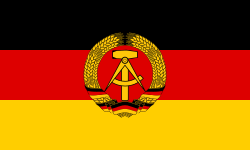



.svg.png)









See also
- AVS-36
- FG 42
- Gewehr 43
- M1 Garand
- M1941 Johnson rifle
- SKS
- List of Russian weaponry
- Lyudmila Pavlichenko
Museum exhibits
- One SVT-38 rifle, one SVT-40 rifle and one SKT-40 carbine are in collection of Tula State Arms Museum in Tula Kremlin[34]
Notes
- Modern Firearms article on SVT-40 Archived 16 December 2003 at the Wayback Machine
- Steve Kehaya; Joe Poyer (1996). The SKS Carabine (CKC45g) (4th ed.). North Cape Publications, Inc. p. 10. ISBN 1-882391-14-4.
- Edward Clinton Ezell (1983). Small Arms of the World: A Basic Manual of Small Arms (12th ed.). Stackpole Books. p. 894. ISBN 0-8117-1687-2.
-
- May 1946 (U.S.) Intelligence Bulletin on Tokarev M1940 gives 2720 ft/s
- Семен Федосеев, "Самозарядная винтовка Токарева", Техника и вооружение, June 2005, p. 16, gives 840 m/s
- The Red Army's Self Loading Rifles: A Brief History Of The Tokarev Rifles Models of 1938 and 1940. By Vic Thomas Of Michigan Historical Collectables
- Small Arms of the World by W. H. B. Smith 9th Edition Revised by Joseph E. Smith 1969 p. 583
- SVT-40 stock crack/bubba questions? - Post #5
- Svt-40 stock repair and reinforcing screw
- How were SVT's "bedded"?
- Bolotin, David Naumovich (1995). Walter, John; Pohjolainen], Heikki (eds.). Soviet Small-arms and Ammunition. trans. Igor F. Naftul'eff. Hyvinkää: Finnish Arms Museum Foundation (Suomen asemuseosäätiö). p. 111. ISBN 9519718419.
- Bolotin, David Naumovich (1995). Walter, John; Pohjolainen], Heikki (eds.). Soviet Small-arms and Ammunition. trans. Igor F. Naftul'eff. Hyvinkää: Finnish Arms Museum Foundation (Suomen asemuseosäätiö). p. 112. ISBN 9519718419.
- Опытный автомат Токарева АТ-44 (СССР. 1944 год)
- Развитие глушителей звука выстрела, устройство глушителя винтовки СВТ-40, карабина Маузер-98К и пистолета-пулемета Ингрэм
- В продолжение данной темы публикуем материал об
- Jowett, Philip; Snodgrass, Brent (5 July 2006). Finland at War 1939–45. Elite 141. Osprey Publishing. p. 48. ISBN 9781841769691.
- "Rifles, part 4". 15 January 2017.
- Bishop, Chris, ed. (1998). "Tokarev rifles". The encyclopedia of weapons of World War II. Barnes & Noble. pp. 218–219. ISBN 9780760710227.
- RIA: Prototype W+F Bern AK44 Copy of the SVT
- "North Korean Small Arms (Democratic People's Republic of Korea)". Small Arms Review. Vol. 16 no. 2. June 2012.
- Edwards, Paul M. (2006). "Communist weapons, infantry". Korean War Almanac. Facts On File. pp. 498-499. ISBN 0-8160-6037-1.
- М. Блюм, А. Волнов. Охотнику о СВТ // журнал "Охота и охотничье хозяйство", № 11, 1989
- Vladimir Brnardic (22 November 2016). World War II Croation Legionaries: Croation Troops Under Axis Command 1941—45. p. 9. ISBN 978-1-4728-1767-9.
- Gelbič, Michal. "1st Czechoslovak Independent Brigade". czechpatriots.com. Retrieved 3 February 2019.
- Nigel, Thomas; Caballero Jurado, Carlos (25 January 2002). Germany's Eastern Front Allies (2): Baltic Forces. Men-at-Arms 363. Osprey Publishing. p. 40. ISBN 9781841761930.CS1 maint: ref=harv (link)
- Military and Paramilitary Vehicles and Weapons of East Germany
- Small Arms Survey (1998). Politics From The Barrel of a Gun (PDF). Cambridge University Press. p. 40.
- Nigel & Caballero Jurado 2002, p. 46.
- W. Darrin Weaver (2005). Desperate Measures: The Last-Ditch Weapons of the Nazi Volkssturm. Collector Grade Publications. p. 61. ISBN 0889353727.
- McNab, Chris (2002). 20th Century Military Uniforms (2nd ed.). Kent: Grange Books. p. 191. ISBN 1-84013-476-3.
- "Про затвердження переліку військового майна Збройних Сил, яке може бути відчужено" [On Approval of the List of Military Property of the Armed Forces, which may be alienated]. zakon4.rada.gov.ua (in Ukrainian). 6 August 2008.
- Nguyen-Khanh Maj. Gen. & Tran-Van-Minh Maj. Gen. (1964). The Chien Cu-War Material. p. 9.
- Granville N Rideout (1971). The Chicom Series (1st ed.). Yankee Pub. Co. p. 106.
- Strange Guns: Viet-Cong SVT-40
- "Кроме переданных в музей Ф. В. Токаревым опытных образцов и поступивших с военных складов штатных самозарядных винтовок образца 1938 г. и 1940 г. в коллекции есть оружие, имеющее мемориальное значение. ... Самозарядный карабин Токарева СКТ-40, редкий на сегодняшний день образец, был личным оружием В. Г. Жаворонкова, секретаря Тульского областного комитета ВКП (б), председателя городского комитета обороны Тулы осенью 1941 г."
Оружие боевое автоматическое / официальный сайт Тульского государственного музея оружия
External links
| Wikimedia Commons has media related to SVT-40. |